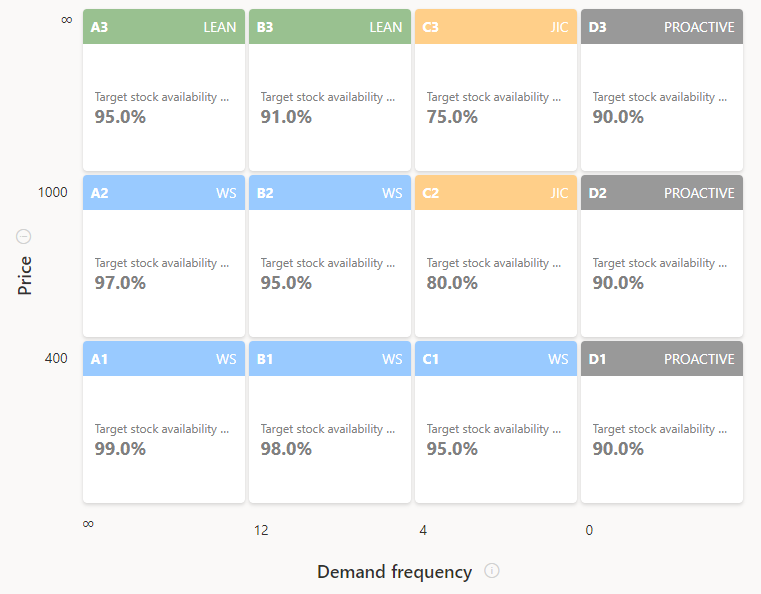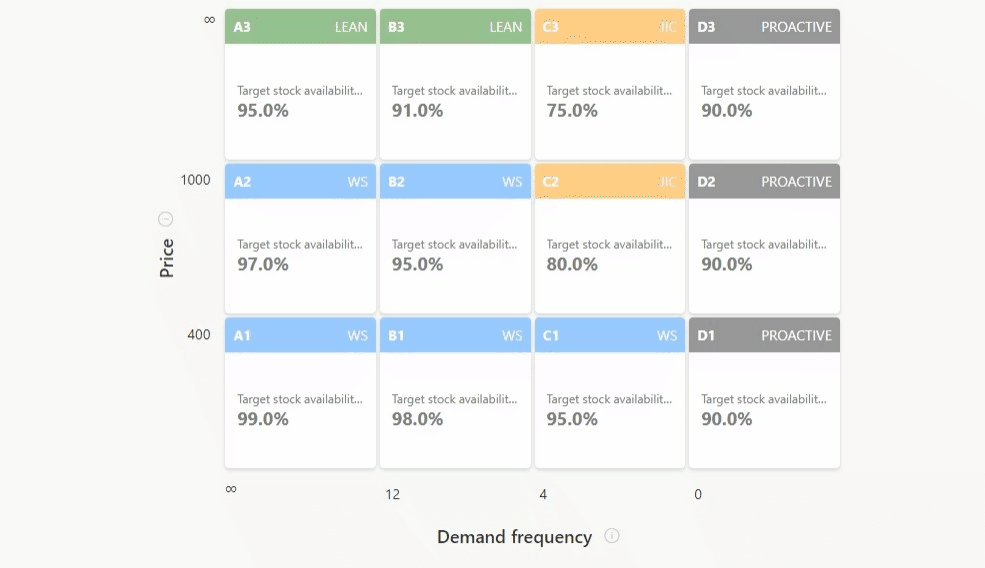Lorem ipsum dolor sit amet, consectetur adipiscing elit, sed do eiusmod tempor incididunt ut labore et dolore magna aliqua. Ullamcorper dignissim cras tincidunt lobortis feugiat vivamus. Sed risus ultricies tristique nulla. Ac orci phasellus egestas tellus rutrum tellus pellentesque. Faucibus a pellentesque sit amet. Ipsum dolor sit amet consectetur adipiscing. Aliquam sem fringilla ut morbi tincidunt augue interdum velit euismod. Venenatis tellus in metus vulputate. Dui vivamus arcu felis bibendum. Eget nunc lobortis mattis aliquam faucibus purus in massa. Donec massa sapien faucibus et. Ipsum suspendisse ultrices gravida dictum fusce ut placerat orci nulla. Ut morbi tincidunt augue interdum velit.
Commodo elit at imperdiet dui accumsan sit amet nulla facilisi. Id neque aliquam vestibulum morbi blandit. Donec pretium vulputate sapien nec sagittis aliquam malesuada bibendum. Mattis pellentesque id nibh tortor id. Aliquam vestibulum morbi blandit cursus risus. Pharetra convallis posuere morbi leo urna molestie. Mauris nunc congue nisi vitae suscipit tellus mauris. Morbi tristique senectus et netus et malesuada. Id porta nibh venenatis cras sed felis eget velit aliquet. Convallis a cras semper auctor neque. Nunc faucibus a pellentesque sit amet porttitor eget dolor morbi. Quis auctor elit sed vulputate mi sit amet mauris. Ultrices mi tempus imperdiet nulla malesuada. Diam ut venenatis tellus in metus vulputate eu. Nisl suscipit adipiscing bibendum est ultricies. Sed viverra ipsum nunc aliquet bibendum enim facilisis gravida neque. Cursus metus aliquam eleifend mi in.
Lorem ipsum dolor sit amet, consectetur adipiscing elit, sed do eiusmod tempor incididunt ut labore et dolore magna aliqua. Ullamcorper dignissim cras tincidunt lobortis feugiat vivamus. Sed risus ultricies tristique nulla. Ac orci phasellus egestas tellus rutrum tellus pellentesque. Faucibus a pellentesque sit amet. Ipsum dolor sit amet consectetur adipiscing. Aliquam sem fringilla ut morbi tincidunt augue interdum velit euismod. Venenatis tellus in metus vulputate. Dui vivamus arcu felis bibendum. Eget nunc lobortis mattis aliquam faucibus purus in massa. Donec massa sapien faucibus et. Ipsum suspendisse ultrices gravida dictum fusce ut placerat orci nulla. Ut morbi tincidunt augue interdum velit.
Commodo elit at imperdiet dui accumsan sit amet nulla facilisi. Id neque aliquam vestibulum morbi blandit. Donec pretium vulputate sapien nec sagittis aliquam malesuada bibendum. Mattis pellentesque id nibh tortor id. Aliquam vestibulum morbi blandit cursus risus. Pharetra convallis posuere morbi leo urna molestie. Mauris nunc congue nisi vitae suscipit tellus mauris. Morbi tristique senectus et netus et malesuada. Id porta nibh venenatis cras sed felis eget velit aliquet. Convallis a cras semper auctor neque. Nunc faucibus a pellentesque sit amet porttitor eget dolor morbi. Quis auctor elit sed vulputate mi sit amet mauris. Ultrices mi tempus imperdiet nulla malesuada. Diam ut venenatis tellus in metus vulputate eu. Nisl suscipit adipiscing bibendum est ultricies. Sed viverra ipsum nunc aliquet bibendum enim facilisis gravida neque. Cursus metus aliquam eleifend mi in.
Lorem ipsum dolor sit amet, consectetur adipiscing elit, sed do eiusmod tempor incididunt ut labore et dolore magna aliqua. Ullamcorper dignissim cras tincidunt lobortis feugiat vivamus. Sed risus ultricies tristique nulla. Ac orci phasellus egestas tellus rutrum tellus pellentesque. Faucibus a pellentesque sit amet. Ipsum dolor sit amet consectetur adipiscing. Aliquam sem fringilla ut morbi tincidunt augue interdum velit euismod. Venenatis tellus in metus vulputate. Dui vivamus arcu felis bibendum. Eget nunc lobortis mattis aliquam faucibus purus in massa. Donec massa sapien faucibus et. Ipsum suspendisse ultrices gravida dictum fusce ut placerat orci nulla. Ut morbi tincidunt augue interdum velit.
Commodo elit at imperdiet dui accumsan sit amet nulla facilisi. Id neque aliquam vestibulum morbi blandit. Donec pretium vulputate sapien nec sagittis aliquam malesuada bibendum. Mattis pellentesque id nibh tortor id. Aliquam vestibulum morbi blandit cursus risus. Pharetra convallis posuere morbi leo urna molestie. Mauris nunc congue nisi vitae suscipit tellus mauris. Morbi tristique senectus et netus et malesuada. Id porta nibh venenatis cras sed felis eget velit aliquet. Convallis a cras semper auctor neque. Nunc faucibus a pellentesque sit amet porttitor eget dolor morbi. Quis auctor elit sed vulputate mi sit amet mauris. Ultrices mi tempus imperdiet nulla malesuada. Diam ut venenatis tellus in metus vulputate eu. Nisl suscipit adipiscing bibendum est ultricies. Sed viverra ipsum nunc aliquet bibendum enim facilisis gravida neque. Cursus metus aliquam eleifend mi in.
Lorem ipsum dolor sit amet, consectetur adipiscing elit, sed do eiusmod tempor incididunt ut labore et dolore magna aliqua. Ullamcorper dignissim cras tincidunt lobortis feugiat vivamus. Sed risus ultricies tristique nulla. Ac orci phasellus egestas tellus rutrum tellus pellentesque. Faucibus a pellentesque sit amet. Ipsum dolor sit amet consectetur adipiscing. Aliquam sem fringilla ut morbi tincidunt augue interdum velit euismod. Venenatis tellus in metus vulputate. Dui vivamus arcu felis bibendum. Eget nunc lobortis mattis aliquam faucibus purus in massa. Donec massa sapien faucibus et. Ipsum suspendisse ultrices gravida dictum fusce ut placerat orci nulla. Ut morbi tincidunt augue interdum velit.
Commodo elit at imperdiet dui accumsan sit amet nulla facilisi. Id neque aliquam vestibulum morbi blandit. Donec pretium vulputate sapien nec sagittis aliquam malesuada bibendum. Mattis pellentesque id nibh tortor id. Aliquam vestibulum morbi blandit cursus risus. Pharetra convallis posuere morbi leo urna molestie. Mauris nunc congue nisi vitae suscipit tellus mauris. Morbi tristique senectus et netus et malesuada. Id porta nibh venenatis cras sed felis eget velit aliquet. Convallis a cras semper auctor neque. Nunc faucibus a pellentesque sit amet porttitor eget dolor morbi. Quis auctor elit sed vulputate mi sit amet mauris. Ultrices mi tempus imperdiet nulla malesuada. Diam ut venenatis tellus in metus vulputate eu. Nisl suscipit adipiscing bibendum est ultricies. Sed viverra ipsum nunc aliquet bibendum enim facilisis gravida neque. Cursus metus aliquam eleifend mi in.
Lorem ipsum dolor sit amet, consectetur adipiscing elit, sed do eiusmod tempor incididunt ut labore et dolore magna aliqua. Ullamcorper dignissim cras tincidunt lobortis feugiat vivamus. Sed risus ultricies tristique nulla. Ac orci phasellus egestas tellus rutrum tellus pellentesque. Faucibus a pellentesque sit amet. Ipsum dolor sit amet consectetur adipiscing. Aliquam sem fringilla ut morbi tincidunt augue interdum velit euismod. Venenatis tellus in metus vulputate. Dui vivamus arcu felis bibendum. Eget nunc lobortis mattis aliquam faucibus purus in massa. Donec massa sapien faucibus et. Ipsum suspendisse ultrices gravida dictum fusce ut placerat orci nulla. Ut morbi tincidunt augue interdum velit.
Commodo elit at imperdiet dui accumsan sit amet nulla facilisi. Id neque aliquam vestibulum morbi blandit. Donec pretium vulputate sapien nec sagittis aliquam malesuada bibendum. Mattis pellentesque id nibh tortor id. Aliquam vestibulum morbi blandit cursus risus. Pharetra convallis posuere morbi leo urna molestie. Mauris nunc congue nisi vitae suscipit tellus mauris. Morbi tristique senectus et netus et malesuada. Id porta nibh venenatis cras sed felis eget velit aliquet. Convallis a cras semper auctor neque. Nunc faucibus a pellentesque sit amet porttitor eget dolor morbi. Quis auctor elit sed vulputate mi sit amet mauris. Ultrices mi tempus imperdiet nulla malesuada. Diam ut venenatis tellus in metus vulputate eu. Nisl suscipit adipiscing bibendum est ultricies. Sed viverra ipsum nunc aliquet bibendum enim facilisis gravida neque. Cursus metus aliquam eleifend mi in.
Lorem ipsum dolor sit amet, consectetur adipiscing elit, sed do eiusmod tempor incididunt ut labore et dolore magna aliqua. Ullamcorper dignissim cras tincidunt lobortis feugiat vivamus. Sed risus ultricies tristique nulla. Ac orci phasellus egestas tellus rutrum tellus pellentesque. Faucibus a pellentesque sit amet. Ipsum dolor sit amet consectetur adipiscing. Aliquam sem fringilla ut morbi tincidunt augue interdum velit euismod. Venenatis tellus in metus vulputate. Dui vivamus arcu felis bibendum. Eget nunc lobortis mattis aliquam faucibus purus in massa. Donec massa sapien faucibus et. Ipsum suspendisse ultrices gravida dictum fusce ut placerat orci nulla. Ut morbi tincidunt augue interdum velit.
Commodo elit at imperdiet dui accumsan sit amet nulla facilisi. Id neque aliquam vestibulum morbi blandit. Donec pretium vulputate sapien nec sagittis aliquam malesuada bibendum. Mattis pellentesque id nibh tortor id. Aliquam vestibulum morbi blandit cursus risus. Pharetra convallis posuere morbi leo urna molestie. Mauris nunc congue nisi vitae suscipit tellus mauris. Morbi tristique senectus et netus et malesuada. Id porta nibh venenatis cras sed felis eget velit aliquet. Convallis a cras semper auctor neque. Nunc faucibus a pellentesque sit amet porttitor eget dolor morbi. Quis auctor elit sed vulputate mi sit amet mauris. Ultrices mi tempus imperdiet nulla malesuada. Diam ut venenatis tellus in metus vulputate eu. Nisl suscipit adipiscing bibendum est ultricies. Sed viverra ipsum nunc aliquet bibendum enim facilisis gravida neque. Cursus metus aliquam eleifend mi in.
Lorem ipsum dolor sit amet, consectetur adipiscing elit, sed do eiusmod tempor incididunt ut labore et dolore magna aliqua. Ullamcorper dignissim cras tincidunt lobortis feugiat vivamus. Sed risus ultricies tristique nulla. Ac orci phasellus egestas tellus rutrum tellus pellentesque. Faucibus a pellentesque sit amet. Ipsum dolor sit amet consectetur adipiscing. Aliquam sem fringilla ut morbi tincidunt augue interdum velit euismod. Venenatis tellus in metus vulputate. Dui vivamus arcu felis bibendum. Eget nunc lobortis mattis aliquam faucibus purus in massa. Donec massa sapien faucibus et. Ipsum suspendisse ultrices gravida dictum fusce ut placerat orci nulla. Ut morbi tincidunt augue interdum velit.
Commodo elit at imperdiet dui accumsan sit amet nulla facilisi. Id neque aliquam vestibulum morbi blandit. Donec pretium vulputate sapien nec sagittis aliquam malesuada bibendum. Mattis pellentesque id nibh tortor id. Aliquam vestibulum morbi blandit cursus risus. Pharetra convallis posuere morbi leo urna molestie. Mauris nunc congue nisi vitae suscipit tellus mauris. Morbi tristique senectus et netus et malesuada. Id porta nibh venenatis cras sed felis eget velit aliquet. Convallis a cras semper auctor neque. Nunc faucibus a pellentesque sit amet porttitor eget dolor morbi. Quis auctor elit sed vulputate mi sit amet mauris. Ultrices mi tempus imperdiet nulla malesuada. Diam ut venenatis tellus in metus vulputate eu. Nisl suscipit adipiscing bibendum est ultricies. Sed viverra ipsum nunc aliquet bibendum enim facilisis gravida neque. Cursus metus aliquam eleifend mi in.
Lorem ipsum dolor sit amet, consectetur adipiscing elit, sed do eiusmod tempor incididunt ut labore et dolore magna aliqua. Ullamcorper dignissim cras tincidunt lobortis feugiat vivamus. Sed risus ultricies tristique nulla. Ac orci phasellus egestas tellus rutrum tellus pellentesque. Faucibus a pellentesque sit amet. Ipsum dolor sit amet consectetur adipiscing. Aliquam sem fringilla ut morbi tincidunt augue interdum velit euismod. Venenatis tellus in metus vulputate. Dui vivamus arcu felis bibendum. Eget nunc lobortis mattis aliquam faucibus purus in massa. Donec massa sapien faucibus et. Ipsum suspendisse ultrices gravida dictum fusce ut placerat orci nulla. Ut morbi tincidunt augue interdum velit.
Commodo elit at imperdiet dui accumsan sit amet nulla facilisi. Id neque aliquam vestibulum morbi blandit. Donec pretium vulputate sapien nec sagittis aliquam malesuada bibendum. Mattis pellentesque id nibh tortor id. Aliquam vestibulum morbi blandit cursus risus. Pharetra convallis posuere morbi leo urna molestie. Mauris nunc congue nisi vitae suscipit tellus mauris. Morbi tristique senectus et netus et malesuada. Id porta nibh venenatis cras sed felis eget velit aliquet. Convallis a cras semper auctor neque. Nunc faucibus a pellentesque sit amet porttitor eget dolor morbi. Quis auctor elit sed vulputate mi sit amet mauris. Ultrices mi tempus imperdiet nulla malesuada. Diam ut venenatis tellus in metus vulputate eu. Nisl suscipit adipiscing bibendum est ultricies. Sed viverra ipsum nunc aliquet bibendum enim facilisis gravida neque. Cursus metus aliquam eleifend mi in.












